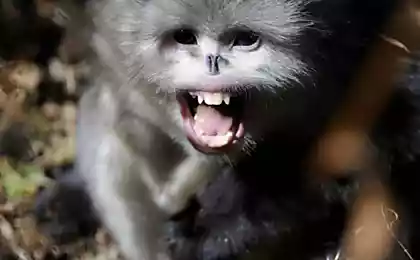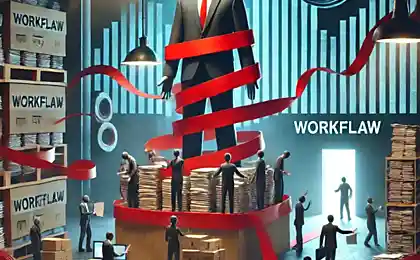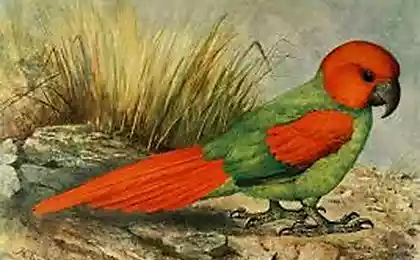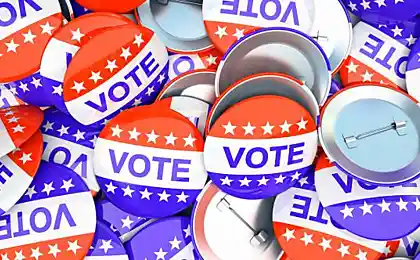685
Tasmanian Devil (5 photos + text)
Marsupial, or the Tasmanian devil (Sarcophilus laniarius; Ustari. Sarcophilus harrisii) - carnivorous marsupial mammal of the family; the only species of the genus Sarcophilus. Its black paint, huge mouth with sharp teeth, ominous night cries and fierce temper gave the first European settlers to the foundation nickname of the stocky predator «devil». Its scientific name is translated from the Greek as "a lover of the flesh».
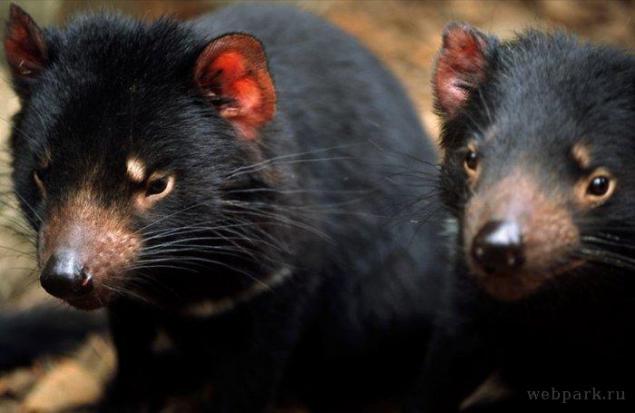
Tasmanian Devil - the largest of modern marsupial predators. It is dense and stocky animal the size of a small dog, but heavy dark color and physique more like a miniature bear. The length of the body is 50-80 cm, tail - 23-30 cm. The dimensions of the body depends on the age, habitat and nutrition. Males are larger than females. Large males weigh up to 12 kg with a height of 30 cm to the shoulders.
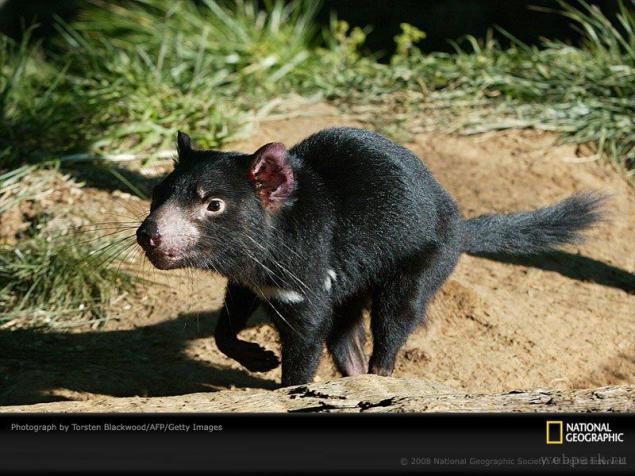
Currently, the Tasmanian devil is found only on the island of Tasmania, although he had previously inhabited and mainland Australia. On the mainland, he disappeared about 600 years ago (400 years before the first Europeans in Australia) - allegedly expelled and annihilated dingo, introduced by the aborigines. In Tasmania, the European settlers also ruthlessly exterminated Tasmanian devil, because they ruined the chicken coops. As a result, development of the island as the Tasmanian devil retreated farther into the unexplored forests and mountain areas of Tasmania, and its population has been steadily declining, while in 1941 the hunt for him was not officially banned. Now Tasmanian devils are common in central, northern and western parts of the island in the territories set aside for grazing sheep as well as in the national parks of Tasmania.

Tasmanian devils have caused a lot of trouble with European settler, ruining coops eating animals caught in traps, and allegedly attacking lambs and sheep, because of what these animals are actively pursued. In addition, meat edible Tasmanian devil appeared and allegedly colonists tastes like veal. By June 1941, when a law was passed on the protection of the Tasmanian devil, who was on the verge of extinction. However, unlike tilatsina (extinct in 1936), the population of the Tasmanian devil managed to recover and now they are quite numerous. Their population, like Kvoll, is subject to strong seasonal fluctuations, as the annual summer (December-January) young Tasmanian devil leave mothers and scattered over the territory in search of food. However, 60% of them die within the first few months, unable to withstand the competition for food.



Tasmanian Devil - the largest of modern marsupial predators. It is dense and stocky animal the size of a small dog, but heavy dark color and physique more like a miniature bear. The length of the body is 50-80 cm, tail - 23-30 cm. The dimensions of the body depends on the age, habitat and nutrition. Males are larger than females. Large males weigh up to 12 kg with a height of 30 cm to the shoulders.

Currently, the Tasmanian devil is found only on the island of Tasmania, although he had previously inhabited and mainland Australia. On the mainland, he disappeared about 600 years ago (400 years before the first Europeans in Australia) - allegedly expelled and annihilated dingo, introduced by the aborigines. In Tasmania, the European settlers also ruthlessly exterminated Tasmanian devil, because they ruined the chicken coops. As a result, development of the island as the Tasmanian devil retreated farther into the unexplored forests and mountain areas of Tasmania, and its population has been steadily declining, while in 1941 the hunt for him was not officially banned. Now Tasmanian devils are common in central, northern and western parts of the island in the territories set aside for grazing sheep as well as in the national parks of Tasmania.

Tasmanian devils have caused a lot of trouble with European settler, ruining coops eating animals caught in traps, and allegedly attacking lambs and sheep, because of what these animals are actively pursued. In addition, meat edible Tasmanian devil appeared and allegedly colonists tastes like veal. By June 1941, when a law was passed on the protection of the Tasmanian devil, who was on the verge of extinction. However, unlike tilatsina (extinct in 1936), the population of the Tasmanian devil managed to recover and now they are quite numerous. Their population, like Kvoll, is subject to strong seasonal fluctuations, as the annual summer (December-January) young Tasmanian devil leave mothers and scattered over the territory in search of food. However, 60% of them die within the first few months, unable to withstand the competition for food.









